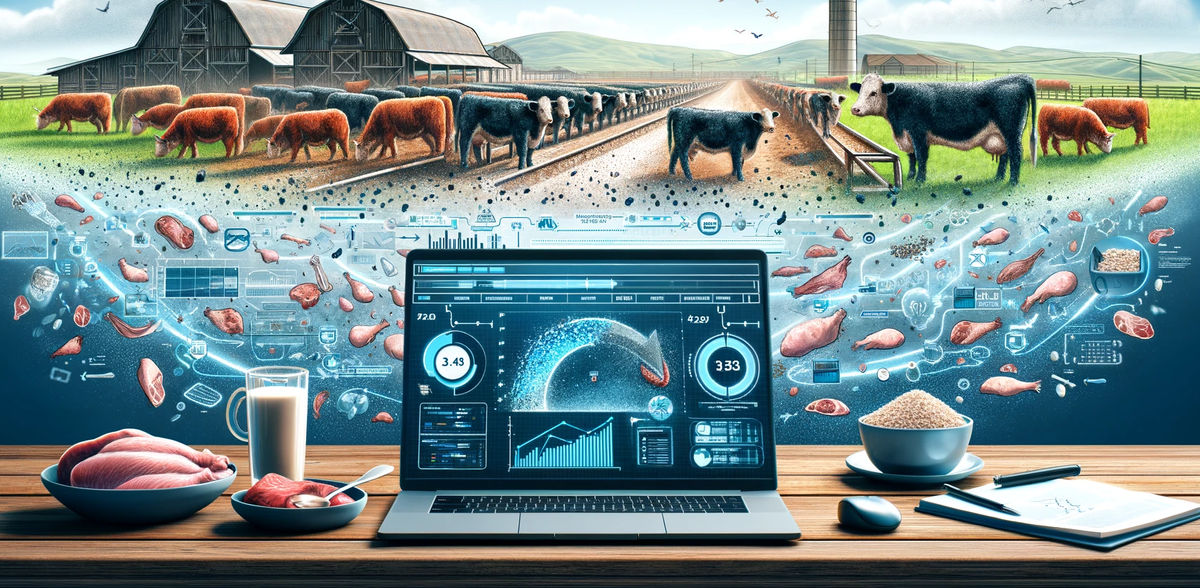From the trough to the plate - digitally calculated
Computer program "ConTrans" estimates how much of an undesirable substance is transferred from animal feed to food
Advertisement
How long does it take for an undesirable substance in animal feed to appear in animal food? And how high is its content then? When can we expect meat and eggs to be "clean" again, i.e. harmless to health, after switching to uncontaminated feed? These are key food safety issues for risk management. Until now, they could only be answered by means of costly studies, lengthy sample testing and complex mathematical models. The digital tool "Contaminant Transfer Predictor" ("ConTrans"), which has now been developed at the Federal Institute for Risk Assessment (BfR), can significantly speed up such assessments. "Our aim is to provide risk management authorities and other actors along the food chain with a digital tool that is easy to use and makes it easier to make decisions quickly on measures to be taken in the event of detected feed contamination," says BfR President Professor Dr. Dr. Andreas Hensel. The focus is currently on contaminants such as dioxins and dioxin-like polychlorinated biphenyls (PCBs), as well as polyfluorinated and perfluorinated alkyl substances (PFAS), which are currently under discussion. In future, the predictive capability is to be extended to other relevant undesirable substances.
Prediction models are based on experimental data from animals. They use complex mathematical methods to simulate the transfer of undesirable substances from animal feed into animal tissue and products. Transfer involves determining the quantities of a substance absorbed by the animal and how it is distributed in the body. It is also mathematically modeled how long it remains in the organism, which secondary products it is broken down into and how it is excreted. These predictions are part of the ConTrans program, which is easy to use.
ConTrans can be used to develop computer-based predictions for scenarios in which contaminated feed is used in animal nutrition. Although they do not replace feed and food monitoring, they can be important decision-making aids for official risk management. Especially when it is necessary to assess whether the specified maximum content of a substance in food is exceeded or whether health risks are to be expected after consumption due to the content. The program can currently be used to model predictions for beef, pork and poultry as well as foods derived from them such as meat, eggs and dairy products in the event of contamination with dioxins, dioxin-like polychlorinated biphenyls (PCBs), per- and polyfluorinated alkyl substances (PFASs) and also some potentially harmful plant substances. The BfR is continuously expanding the program.
Note: This article has been translated using a computer system without human intervention. LUMITOS offers these automatic translations to present a wider range of current news. Since this article has been translated with automatic translation, it is possible that it contains errors in vocabulary, syntax or grammar. The original article in German can be found here.
Other news from the department science
Most read news
More news from our other portals
See the theme worlds for related content
Topic world Food safety
Food safety is at the heart of the food and beverage industry. It ensures that the food we eat every day is not only nutritious, but also free of harmful contaminants. From field to plate, the industry monitors and regulates every step of the process with strict quality controls, advanced testing methods and continuous research.

Topic world Food safety
Food safety is at the heart of the food and beverage industry. It ensures that the food we eat every day is not only nutritious, but also free of harmful contaminants. From field to plate, the industry monitors and regulates every step of the process with strict quality controls, advanced testing methods and continuous research.































































